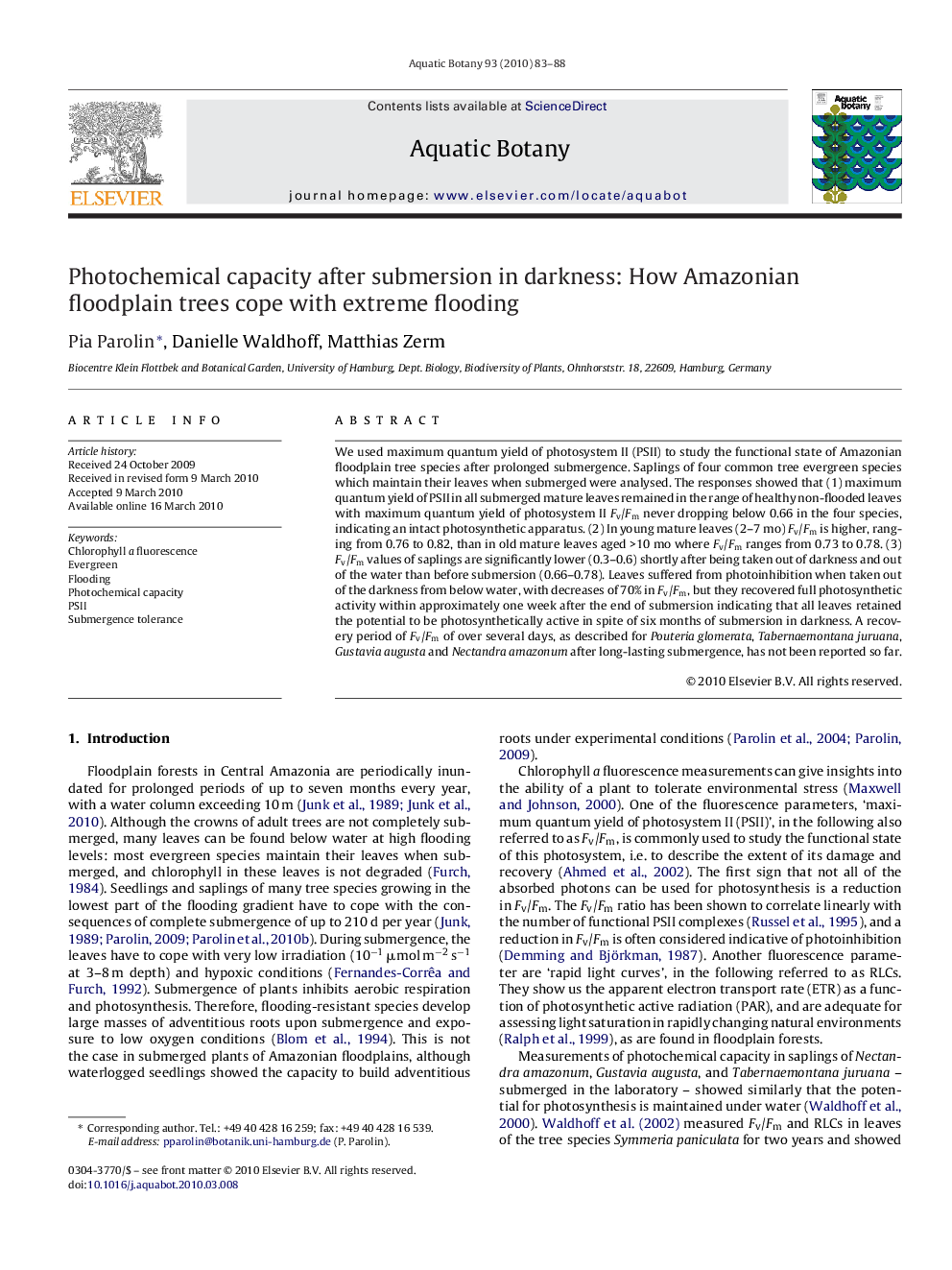| کد مقاله | کد نشریه | سال انتشار | مقاله انگلیسی | نسخه تمام متن |
|---|---|---|---|---|
| 4528284 | 1324297 | 2010 | 6 صفحه PDF | دانلود رایگان |

We used maximum quantum yield of photosystem II (PSII) to study the functional state of Amazonian floodplain tree species after prolonged submergence. Saplings of four common tree evergreen species which maintain their leaves when submerged were analysed. The responses showed that (1) maximum quantum yield of PSII in all submerged mature leaves remained in the range of healthy non-flooded leaves with maximum quantum yield of photosystem II Fv/Fm never dropping below 0.66 in the four species, indicating an intact photosynthetic apparatus. (2) In young mature leaves (2–7 mo) Fv/Fm is higher, ranging from 0.76 to 0.82, than in old mature leaves aged >10 mo where Fv/Fm ranges from 0.73 to 0.78. (3) Fv/Fm values of saplings are significantly lower (0.3–0.6) shortly after being taken out of darkness and out of the water than before submersion (0.66–0.78). Leaves suffered from photoinhibition when taken out of the darkness from below water, with decreases of 70% in Fv/Fm, but they recovered full photosynthetic activity within approximately one week after the end of submersion indicating that all leaves retained the potential to be photosynthetically active in spite of six months of submersion in darkness. A recovery period of Fv/Fm of over several days, as described for Pouteria glomerata, Tabernaemontana juruana, Gustavia augusta and Nectandra amazonum after long-lasting submergence, has not been reported so far.
Journal: Aquatic Botany - Volume 93, Issue 2, August 2010, Pages 83–88